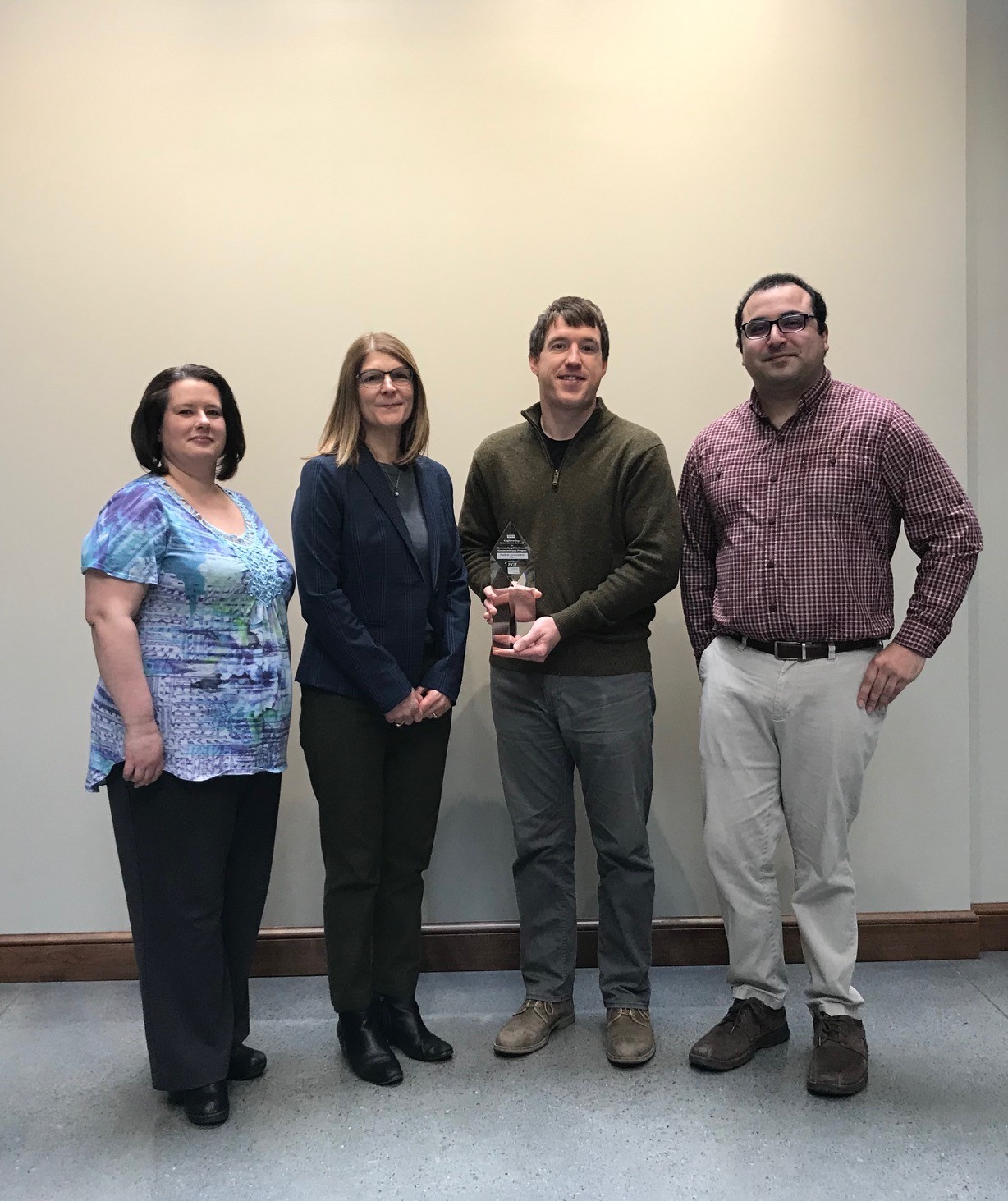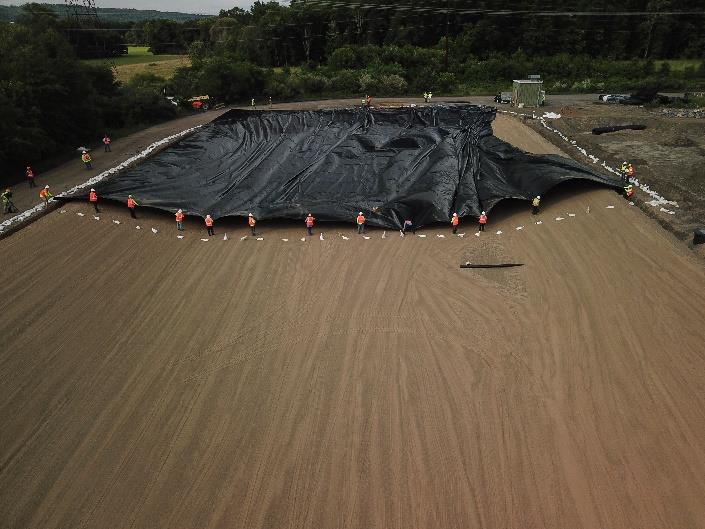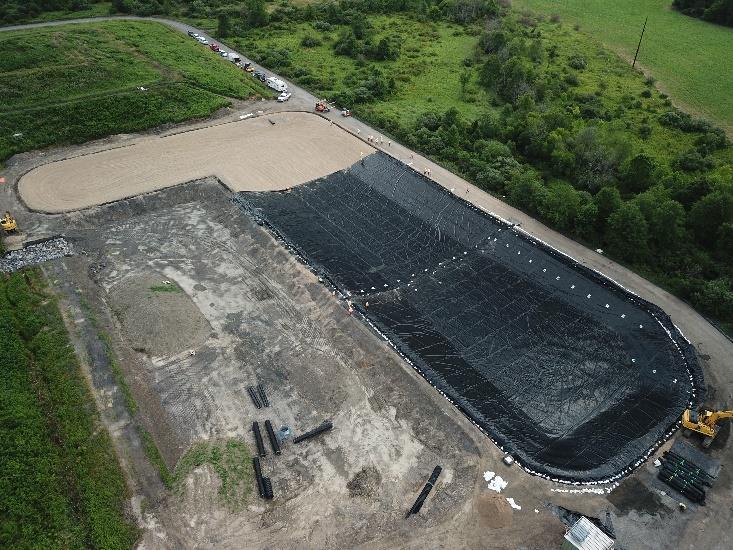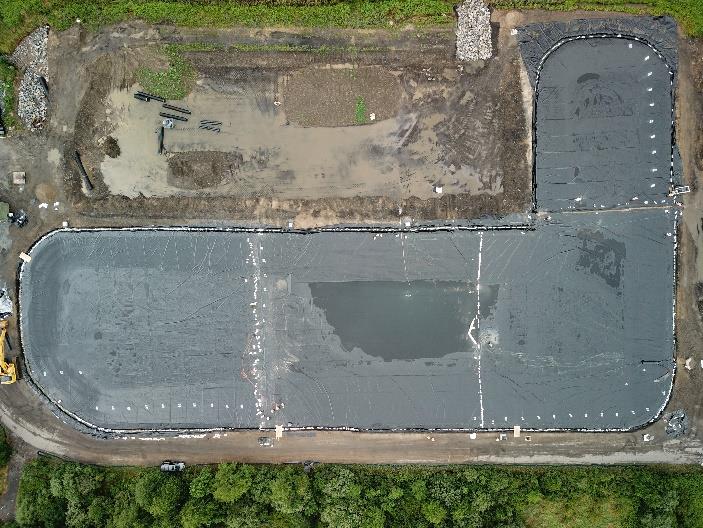
The Fabricated Geomembrane Institute (FGI) at the University of Illinois at Urbana-Champaign presented two (2) Fabricated Geomembrane Engineering Innovation Awards during its biennial membership meeting in Houston, Texas on February 12, 2019 at the 2019 Geosynthetics Conference. The 2019 Engineering Innovation Award for Outstanding Fabricated Geomembrane Project was presented to Hull& Associates, Inc. (see Figure 1) for the Montour Ash Landfill-Contact Water Basin Project.
Coal Combustion Residuals (CCRs) are by products of the combustion of coal at power plants owned by utility companies and power producers. CCRs are typically stored within surface impoundments as wet slurry or into landfills as dry CCRs. One type of CCR, fly ash, can be used for beneficial use in concrete. In some cases, fly ash may be extracted from dry landfills for beneficial use. In preparation for the harvesting of fly ash from the existing closed landfill at the Montour Power Plant, a contact water basin was constructed in 2018 downstream of the landfill. The contact water basin was constructed to manage contact water that would be generated when surface water contacts exposed fly ash during harvesting operations. The initial permit application for the basin included a composite geosynthetic liner system consisting of, from bottom to top: an engineering subgrade with underdrain system, geosynthetic clay liner (GCL),60 mil textured high density polyethylene (HDPE) geomembrane, non-woven cushion geotextile, and a protective stone layer.
Hull & Associates, Inc. (Toledo, OH) prepared the basin design to manage the runoff anticipated from a 25-year/24-hour storm event, while also providing temporary storage of any sediment-laden material within the basin. Prior to construction of the composite liner system, Owens Corning and CQA Solutions approached Hull to propose the use of a RhinoMat Reinforced Composite Geomembrane (RCG) as a moisture barrier between the underdrain and GCL to aid the construction process due to the extensive precipitation that was occurring in the area. To ensure that the RhinoMat andGCL interface would not pose an interface friction and slope stability risk and would meet permit requirements, Hull initiated laboratory shear testing of the material prior to construction. The testing indicated that the materials would be stable with the 4H:1V side slopes of the basin. The contact water basin design is approximately 1.9 acres in area, with 4H:1V side slopes, and a depth of roughly 11 feet. Factory fabrication of the RhinoMat geomembrane resulted in four panels being created,three of which were identical size, and relatively square in shape (160 ft. x170 ft.). The fourth panel was fabricated into a 120 ft. by 155 ft. rectangle.Panels were designed for optimal placement and deployment direction for ease of installation based on the proposed basin configuration and to minimize field seaming and testing.
Installation of the RhinoMat geomembrane began at approximately 8:00 a.m. on the morning of July 21, 2018. All four panels were deployed and placed in the anchor trenches before noon on that day, using a crew of approximately eleven (11) people. A 0.5-inch rainstorm began at approximately 12:00 p.m. that afternoon and prevented any welding the rest of that day. However, the deployed RhinoMat protected the engineered subgrade, and prevented damage to the previously exposed underdrain system. On July 22, 2018, the basin was partially full from rainfall. Water had to be pumped from the basin to ensure that panel edges were dry enough to complete the three connection field seams. Once these seams were complete, they were non-destructively tested, and boots were installed around the two inlet pipes. RhinoMat installation was deemed complete on the afternoon of July 22, 2019, just a few hours prior to a historic rainfall event.
The week of July 23, 2018 brought over 11 inches of rainfall to the Washingtonville, PA area, causing historic flooding and damage to roads, bridges, and flood control structures. Rapid installation of the fabricated RhinoMat geomembrane on July 21 and 22 provided protection for the engineered subgrade and underdrain in the basin, which would have otherwise been damaged to the point of required reconstruction, and over of $100,000 in rework. The RhinoMat withstood the rainfall, and served as a high-performance moisture barrier within the composite liner section of the basin design. This is an example of the benefits of the high quality and rapid deployment of fabricated geomembranes and how fabricated geomembranes can help solve construction challenges, while also meeting design intent and permit requirements.


